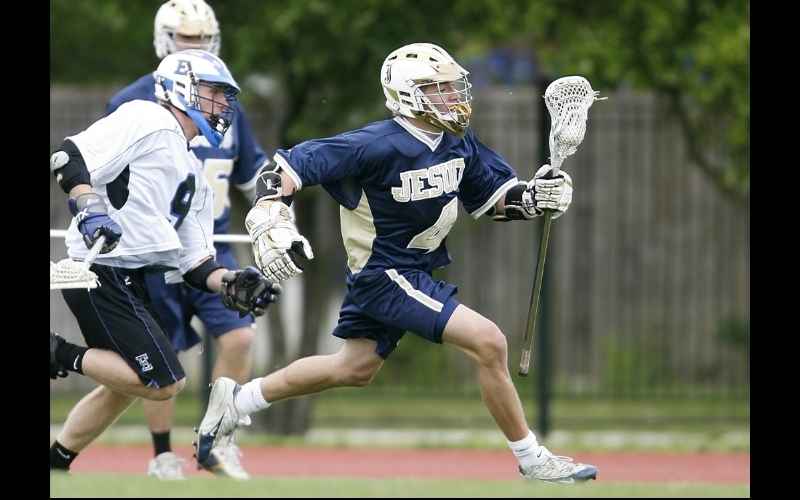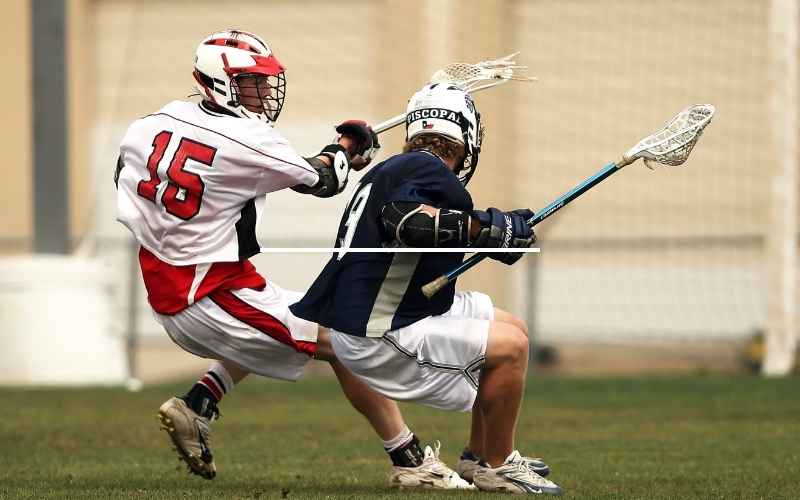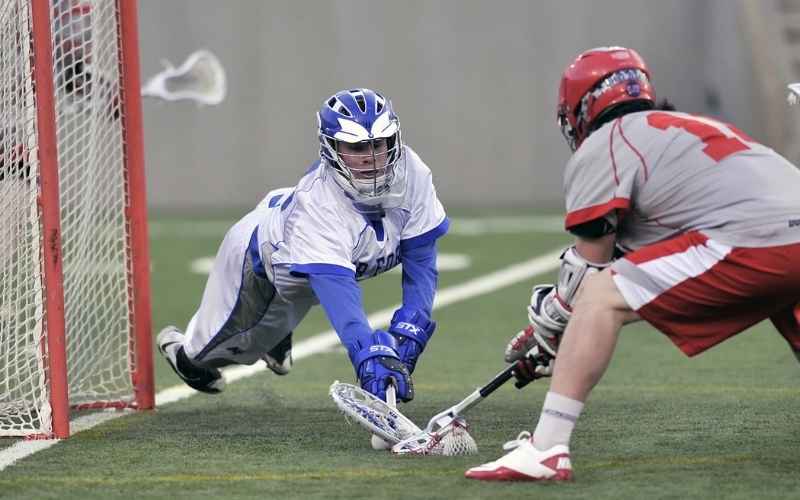I was mostly a midfielder in my playing days and the position requires plenty of aggression.
But is it the most aggressive on the field? I could be biased so I sought opinions from experienced players in every position.
This article looks at every position to see how they rate on aspects like physicality and mental toughness.
The overall verdict was that attackman is the most aggressive position. Read on to learn why.
Judging Aggression On The Field
Although coaches, players, and fans may have slightly differing interpretations of aggression, I think we all agree that several elements are part of the trait.
Physicality is a big part of lacrosse. Players use their bodies to assert dominance over the opposition. I’m talking about legal checks and fighting for loose balls.
But players don’t need to be physically big to be aggressive.
Harassing and harrying the opposition doesn’t require a big physical build. Smaller players who use pace and quick feet to challenge shots and contest passes are also showing aggression.
There is a mental part to aggression too. Coaches will pick assertive players who make things happen over those who let the game come to them.
For example, quick-witted players who initiate fast breaks are showing aggressive play.
Aside from being assertive, there is a mental toughness that is part of the aggression. Less aggressive players wilt under pressure.
So, having broken it down, now let’s look at how each position rates in aggressive traits.
Why Attackmen Are The Most Aggressive Players In Lacrosse

Every position is important in lacrosse, but attackmen win games as the primary goal-scorers.
Attackmen are constantly pursuing scoring opportunities whether to score themselves or to create chances for others. They initiate most of the offensive plays in the attacking zone.
Taking that responsibility requires confidence and assertiveness. Then they must be aggressive when carrying out the attack.
I mentioned physicality as an attribute, but attackmen are usually lighter and more agile than defenders and midfielders.
But that means that good attackmen must be aggressive when shielding the ball, taking body checks, and fighting for ground balls.
Of course, attackmen have to play their part in defense when their team loses possession.
The best aggressive attackers actively participate in the ride. They will pressure the opposition and try to force turnovers.
Finally, attackmen are the main focus of the opposition. They are under constant pressure. That includes niggle and body checks that border on the legal line.
This means that attackmen need a high level of mental toughness. That’s all part of the aggression.
Midfielders And Aggression

Some players were adamant that midfielder is the most aggressive position. Needless to say, those players were midfielders!
But they made a good argument.
Midfielders must use their body with controlled aggression to initiate body contact and check the opposition players (legally).
Fighting for ground ball is crucial in lacrosse, and midfielders are often the ones looking to control possession. They often have to turn on a dime, push through traffic, and dive toward the ball.
Midfielders must also be relentless in riding the opposition to prevent them from clearing the ball.
On the other side of the coin, they must be aggressive when their team is in clearing situations. It’s usually up to the midfielders to evade the opposing defensemen and shield the ball until they can get it away to an attackmen.
Defensemen And Aggression
The fundamental role of defensemen is to stop the opposition from scoring goals.
Defensemen are constantly engaging in body checks, stick checks, and controlled cross-checks to dislodge the ball or just to disrupt movement. This requires significant physicality.
Defenders must harry the opposing attackmen to deny scoring opportunities. With high aggression, they can force the attacking player to take a low-percentage shot or even cough up the ball.
What I said about midfielders and ground ball also applies to defensemen.
In terms of mental toughness, defenders are responsible for clearing the ball and transitioning it to the offensive end. A defenseman can’t switch off at any time.
What About Goalies?

Everyone agreed that goalies require aggression, but it’s probably the least aggressive position on the field.
Goalies don’t engage in the kind of body checks and physical play as their teammates.
However, a goalie has to be assertive in protecting their space and stepping out to cut down shooting angles.
Perhaps the most stressful situation in a game is a one-on-one between a breakaway attacker and the goalie. The aggressive goalies challenge the shooter and force them into making poor decisions.
Goalies also need mental toughness, especially in a weaker team. When faced with a barrage of shots, they have to maintain their composure.
Summary
I’ve run through each position and pointed out that every player needs to be aggressive in certain situations.
However, attackmen are continually in situations that require them to be assertive and dominant.
That makes the position the most aggressive in lacrosse.
Other Traits
Are you curious about other traits in the sport? Check out these articles: